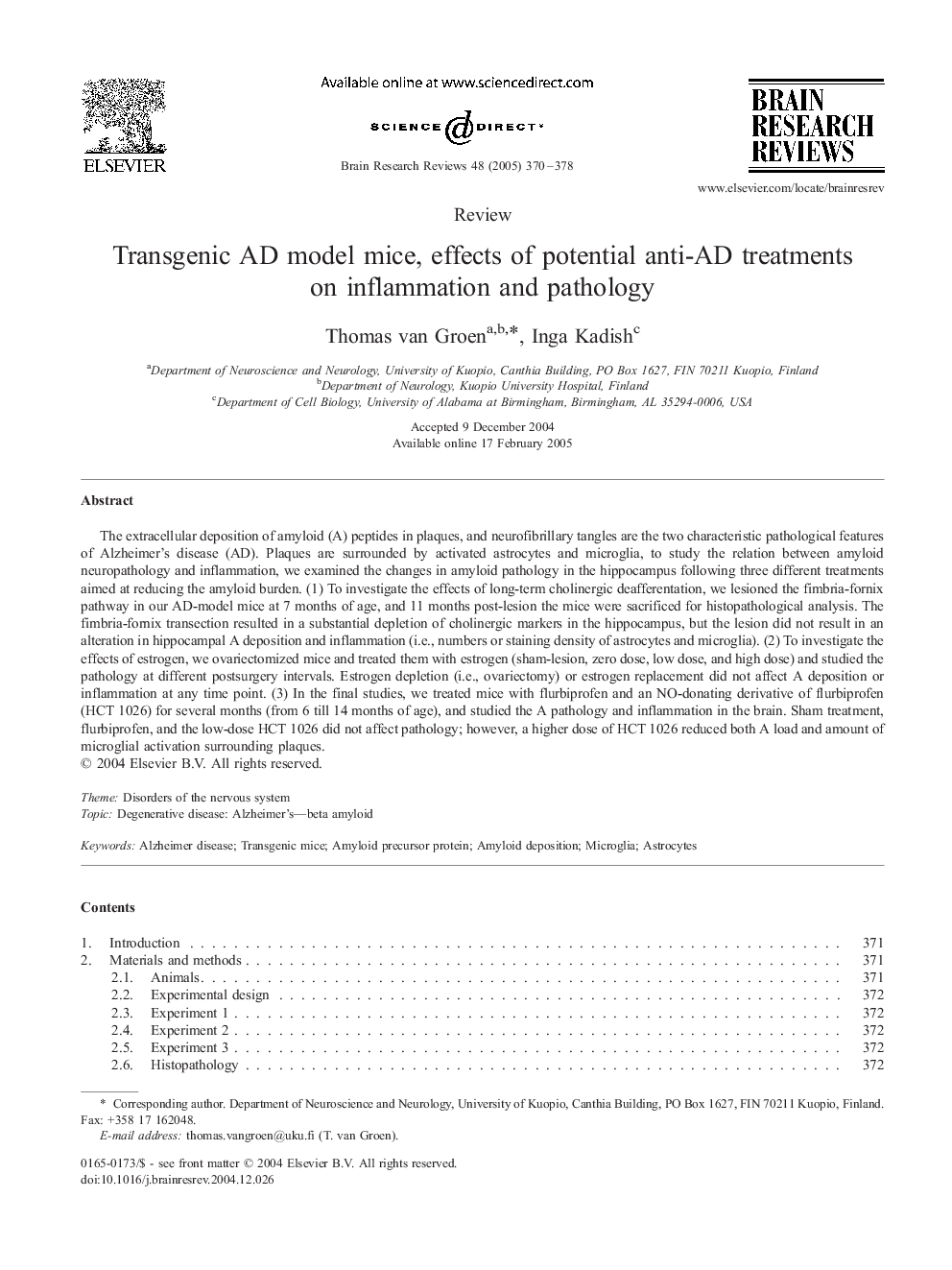| Article ID | Journal | Published Year | Pages | File Type |
|---|---|---|---|---|
| 9423173 | Brain Research Reviews | 2005 | 9 Pages |
Abstract
The extracellular deposition of amyloid (A) peptides in plaques, and neurofibrillary tangles are the two characteristic pathological features of Alzheimer's disease (AD). Plaques are surrounded by activated astrocytes and microglia, to study the relation between amyloid neuropathology and inflammation, we examined the changes in amyloid pathology in the hippocampus following three different treatments aimed at reducing the amyloid burden. (1) To investigate the effects of long-term cholinergic deafferentation, we lesioned the fimbria-fornix pathway in our AD-model mice at 7 months of age, and 11 months post-lesion the mice were sacrificed for histopathological analysis. The fimbria-fornix transection resulted in a substantial depletion of cholinergic markers in the hippocampus, but the lesion did not result in an alteration in hippocampal A deposition and inflammation (i.e., numbers or staining density of astrocytes and microglia). (2) To investigate the effects of estrogen, we ovariectomized mice and treated them with estrogen (sham-lesion, zero dose, low dose, and high dose) and studied the pathology at different postsurgery intervals. Estrogen depletion (i.e., ovariectomy) or estrogen replacement did not affect A deposition or inflammation at any time point. (3) In the final studies, we treated mice with flurbiprofen and an NO-donating derivative of flurbiprofen (HCT 1026) for several months (from 6 till 14 months of age), and studied the A pathology and inflammation in the brain. Sham treatment, flurbiprofen, and the low-dose HCT 1026 did not affect pathology; however, a higher dose of HCT 1026 reduced both A load and amount of microglial activation surrounding plaques.
Keywords
Related Topics
Life Sciences
Neuroscience
Neuroscience (General)
Authors
Thomas van Groen, Inga Kadish,
